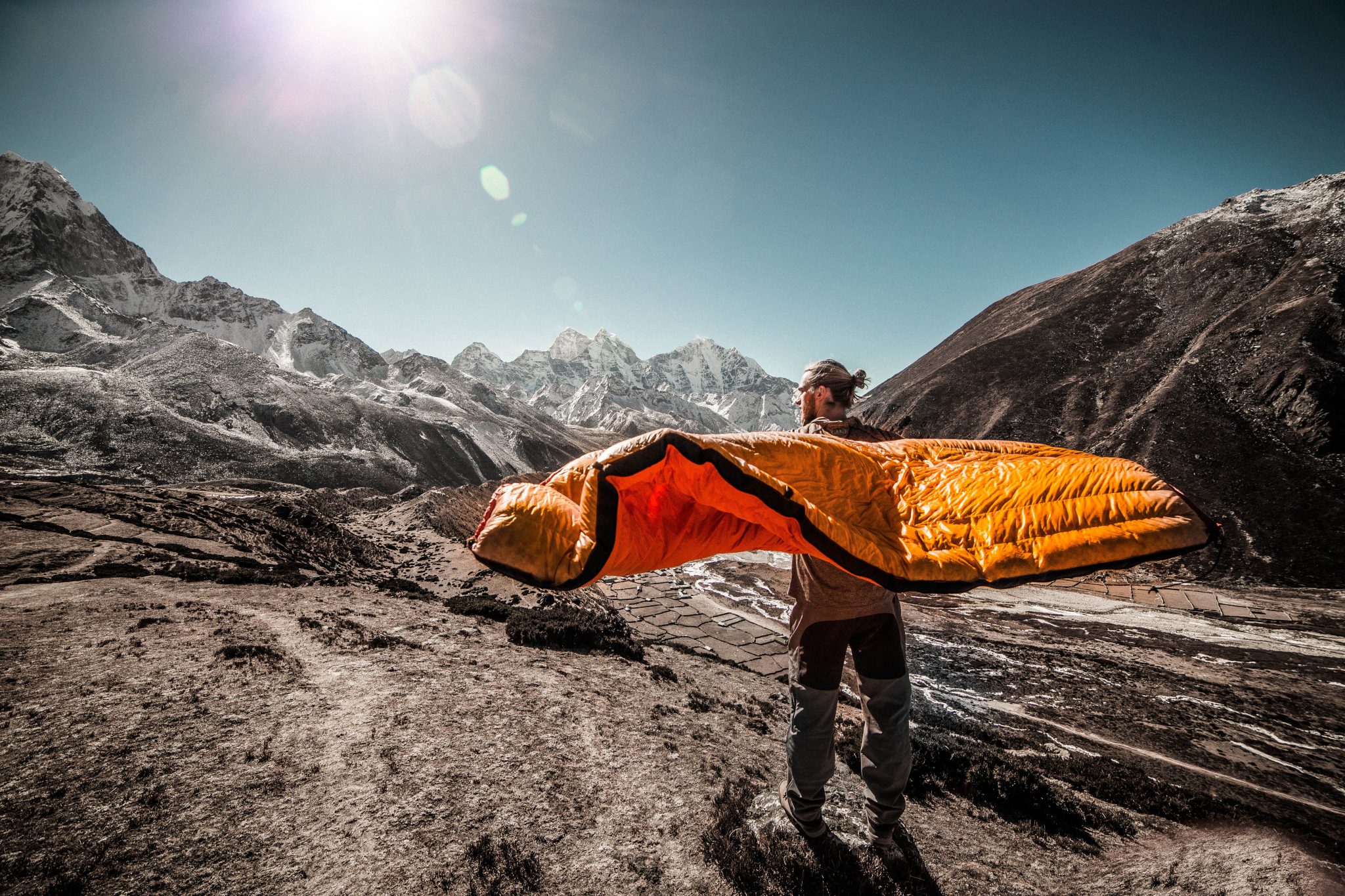Perhaps no single piece of gear is more critical to comfort, and even survival, in the backcountry than a good sleeping bag. At first blush, you might think that choosing a sleeping bag would be a pretty simple endeavor. But fill material, fill power, and comfort, T-limit, and survival temperature ratings can be enough to make your head spin. Read on and we will break it all down while offering a few recommendations.
Fill Material
The material inside your sleeping bag that provides insulation and keeps you warm is the fill material. There are two main categories for fill: synthetic and down.
Between the two, down is by far the superior fill material. This is because down is lighter, more compressible (packable), and more versatile, making a single bag usable across larger temperature ranges. However, down sleeping bags insulate less effectively when wet or damp (so don’t breath into your bag) and are much more expensive. Because of this, a synthetic bag can be a great option if you are camping out of your truck. If you are packing into a destination and will need to carry your bag around and fit it inside a pack, down will be more than worth the extra cost. Just replace the stuff sack that comes with it with a waterproof compression sack to keep it dry and pack it down even smaller.
Fill Power
When you look at down sleeping bags, you will see ratings like 650+ fill power down or 800+ fill power down. This is a rating used to describe the loft of down feathers. The higher the loft, the more compressible it is. It’s also warmer and is generally of higher quality. This means that one ounce of 800-fill down will fill more space (making it warmer) and be more compressible (so it will pack down into a smaller bundle) than one ounce of 700-fill down. It will also be more expensive.
However, an 800-fill down sleeping bag is not necessarily a warmer sleeping bag than a 700-fill power down sleeping bag. To determine which bag is warmer, you will want to look at the temperature ratings. Use the fill power rating as a guide for weight and compressibility.
Temperature Ratings
Temperature ratings should be the most straightforward part of shopping for a sleeping bag. Unfortunately, they aren’t. The industry has managed to make a convoluted mess of it. First, a sleeping bag manufacturer can put any rating claim it wants onto a sleeping bag. That said, there is an organization, the ISO (International Standards Organization), that provides some standardization to this. Look for bags that have ISO- or EN-certified temperature ratings.
ISO-rated sleeping bags will actually get three ratings: comfort, T-limit, and extreme/survival.
- Comfort – This is the temperature at which the average woman would be able to sleep in a relaxed position for eight hours without sleep being interrupted due to cold. A woman’s metabolic rate is used for this test because women typically have a lower metabolic rate than men.
- Limit – This is the temperature that an average man can sleep in a curled-up position for six hours without feeling cold.
- Extreme/survival – This is the temperature at which the average woman could spend six hours without risk of hypothermia. Extreme discomfort, including serious frostbite, are not precluded.
Each of these ratings assumes that the sleeping bag is on an insulated mat inside a tent and that the user is wearing long underwear, socks, and a stocking cap. So if you don’t like wearing socks to bed or prefer sleeping in less clothing, you will want to get a warmer sleeping bag.
Another thing to keep in mind: Most sleeping bag manufacturers list the comfort rating in the name of women’s sleeping bags, but the limit rating in the name of men’s sleeping bags. This means that, typically, a 15-degree women’s bag is warmer than a 15-degree men’s bag. If you are shopping online, look in the specifications tab for the other ratings; if you are in a store, the ratings will be printed inside of the zipper.
If you are going to buy just one bag, a zero-degree bag will keep you comfortable across the widest variety of fall temperatures, especially in the mountains.
Size
The final thing to consider when shopping for a sleeping bag is size and shape. As far as shape goes, mummy or spoon-shaped sleeping bags are the most space efficient and will keep your feet warmer. Again, if you are truck camping, a rectangular bag could be acceptable, but otherwise a mummy or spoon-shaped bag is superior. Spoon-shaped bags are mummy bags that have been modified by widening the knee area to make side sleeping more comfortable.
The downside of mummy bags is that they can be uncomfortably tight for larger individuals. Fortunately, there are mummy bags in long and long/wide. If you are over six feet tall, you will want a long bag, and if you are stocky or overweight, you will probably want a wide bag.
A Few Recommendations
There are an almost unlimited number of sleeping bag manufacturers out there. But, when it comes to value, REI actually makes some excellent sleeping bags. If you fit into a regular-size mummy bag, the REI Magma is probably the best bang for your buck out there. REI does also have a few offerings in long/wide.
If you want the best and are willing to shell out, Nemo makes some great sleeping bags, and the Nemo Sonic is among the best sleeping bags on the market. It is available in short, regular, and long (the long is a bit wider as well). The Sonic has a number or premium features such as a waterproof footbox, venting gills to allow for temperature regulation, and a draft collar both above and below your neck to seal heat in and moisture from your breath out, to name a few.








Comments